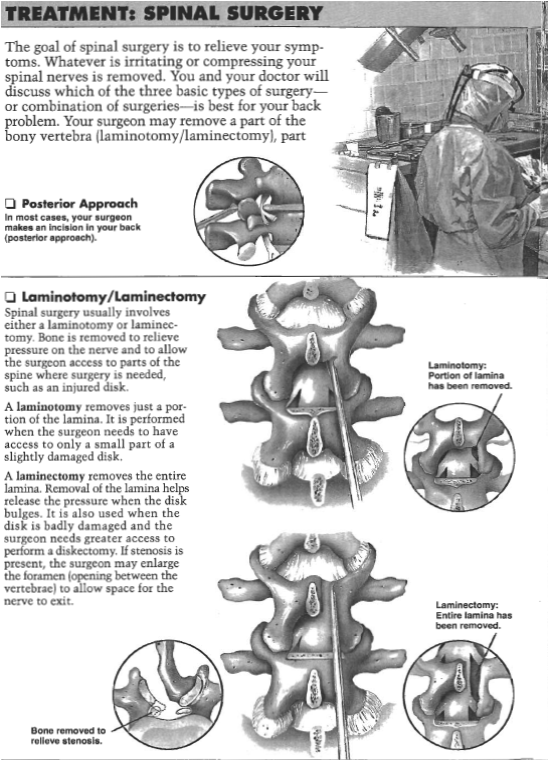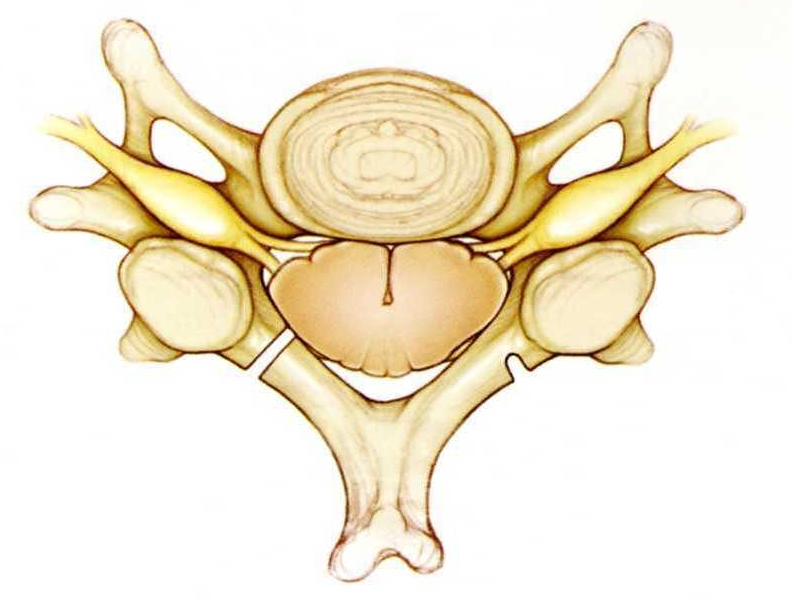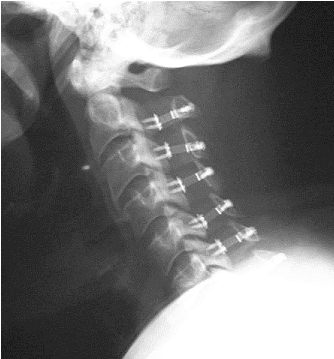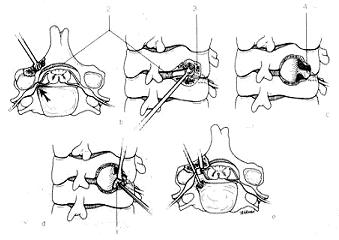Laminoplasty
CERVICAL SURGERY
The cervical surgery that has been scheduled for you is to correct the problems that you have been experiencing in your cervical spine. Your doctor has discussed with you the possible surgeries that may assist in helping correct your problems. A description of those surgeries is below to help you. He has elected to perform the following surgery for you:
The surgery consists of 2 parts—the decompression and the instrumentation.
DECOMPRESSION PORTION
This part of the operation is done to decompress the nerves and spinal cord on the back of the neck. There are a variety of techniques that are used to perform a decompression. A description of those various options is below to help you understand. Your doctor will pick the best option for your particular case.
Normal Cervical Spine
Posterior Cervical Foraminotomy
This surgery involves the opening of the hole where the individual nerve exits away from the spinal cord to go down the arm. This hole is called the foramen. Opening the hold will remove the pressure on the nerve. This may or may not be done in conjunction with a fusion.

Posterior Cervical Laminectomy
This surgery involves removal of the bone overlying the spinal cord. This bone is called the lamina. Removing the bone with relieve the pressure on the spinal cord. This may or may not be done in conjunction with a fusion.
Posterior Cervical Laminaplasty
This surgery involves hinging the bone overlying the spinal cord, much like you do when you open a door. The bone is called the lamina. This procedure will relieve the pressure on the spinal cord. This may or may not be done in conjunction with a fusion.

INSTRUMENTATION PORTION
Laminoplasty Instrumentation
This surgery involves the cervical spine on the back of your neck. It preserves the motion at the operated level(s). You will have titanium screws with small plates placed to hold the bone in place while the hinge heals.

In this operation, the bone takes 2 to 4 months to fully heal. Until that time you may still have some aches and pains in your neck and between your shoulder blades. All of this is normal during the healing process. You will need to actively work on both your neck and shoulder motion after the surgery. The faster your motion returns to normal, the faster your pain goes away.
You can speed up this healing period by doing several things:
1) 30-40 minutes of aerobic exercise, 3-4 times per week, which feeds the growing bone with oxygenated blood
2) Avoid extremes of motion in your neck, since the less you stress it, the faster it heals
3) Do not take NSAIDS such as Ibuprofen, Aleve, Aspirin or other anti-inflammatories, as they all slow down bone healing. You may take Tylenol
4) Do not use any tobacco products

